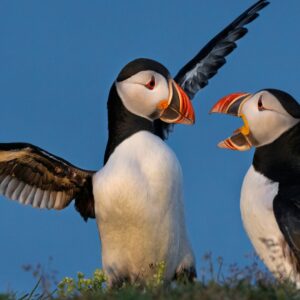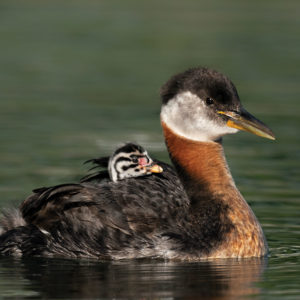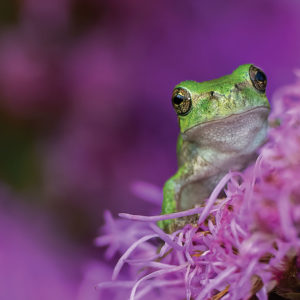Learn about the Bighorn
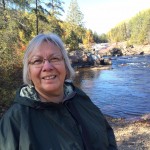
Valerie Assinewe,
Guest Blogger
This blog is written by guest blogger Valerie Assinewe.
Under the bright autumn sky, two powerful males face off, then hurtle towards each other with all their strength, and collide head-on with a thunderous crash. No, it’s not tryout season for the Canadian Football League. This clash is between two Bighorn rams in rutting season, and my blog post provides a glimpse at the species that practices one of the most spectacular courtships in nature.
Where can you find them?
The Bighorn Sheep (Ovis canadensis) is found in alpine meadows, grassy slopes and foothill country from southern Canada to Colorado, always in close proximity to the cliffs and bluffs of the Rocky Mountains.
Bighorn Sheep are social, but usually only with their own gender, except during breeding season/rut. Males live in bachelor herds of 5-50 rams; females live in nursery herds of 5-100 members that include adult females and their young.
How to identify these sheep:
Bighorn Sheep are brown to greyish brown in colour, with light underparts, a white muzzle and an obvious, light rump patch. They are the largest of all North American wild sheep. Adult males/rams weigh up to 135 kg and measure 160-180 cm from head to tail; adult females/ewes are much smaller, averaging 70 kg and ~150 cm in length.
The most distinctive characteristic of the ram is its massive horns, which spiral back, out, and then forward in an arc. Ewes and young rams have spike-like, curved horns. Head-butting battles among the rams are about dominance and the intensity of the fighting culminates during the rut when the dominant rams mate the ewes.
How do they reproduce?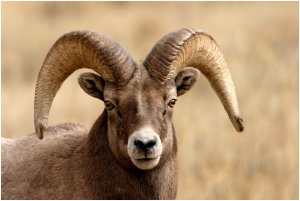
Generally, ewes do not breed until their second or third year, and rams until their seventh year. Adult sheep mate in autumn. In the spring, the ewe seeks a protected area to give birth to her lamb. After only a few days, the young are able to join the herd. They are weaned after four to six months.
Did you know?
- Bighorn Sheep, are part of the Bovidae family, which includes antelopes, bison, buffalo, cattle, goats and muskoxen. Bovids are ruminants with unbranched hollow horns that are generally present on both sexes.
- Like other ruminants, Bighorn Sheep have four-chambered stomachs that are adapted to ferment cellulose before digestion. To completely digest their food, sheep will regurgitate their food—referred to as cud—into their mouths, re-chew and swallow.
- Counting the annuli or growth rings of the horn can provide an estimate of a sheep’s age. The horns grow from the skin over a conical bony core and are never shed. They grow well during the summer with the good feed, then more slowly in the fall and winter, with decreased food. It is harder to age a ewe than a ram because the ewe’s horn growth is not as distinctive.
- Bighorn Sheep are very agile, second only to mountain goats in their ability to climb steep terrain. The Bighorn Sheep have front hoofs that are slightly larger than the hind. A hard rim around the outer edge of each hoof surrounds a softer, concave area in the middle, providing the necessary traction to bound from one precarious ledge to the next.
- Alberta designated the Rocky Mountain Bighorn Sheep as the provincial animal in 1989. Prehistoric remains have been found in most of the river valleys across Alberta, showing that at one time some of the largest herds of Rocky Mountain Bighorn Sheep roamed the province.
The Bighorn Sheep herds may never return to their early 19th-century abundance; much of their former range has been permanently settled or altered by man. However, with your support for conservation efforts that increase protected areas in western Canada, the boom of the majestic Bighorn rut will reverberate in the Rockies for years to come.

